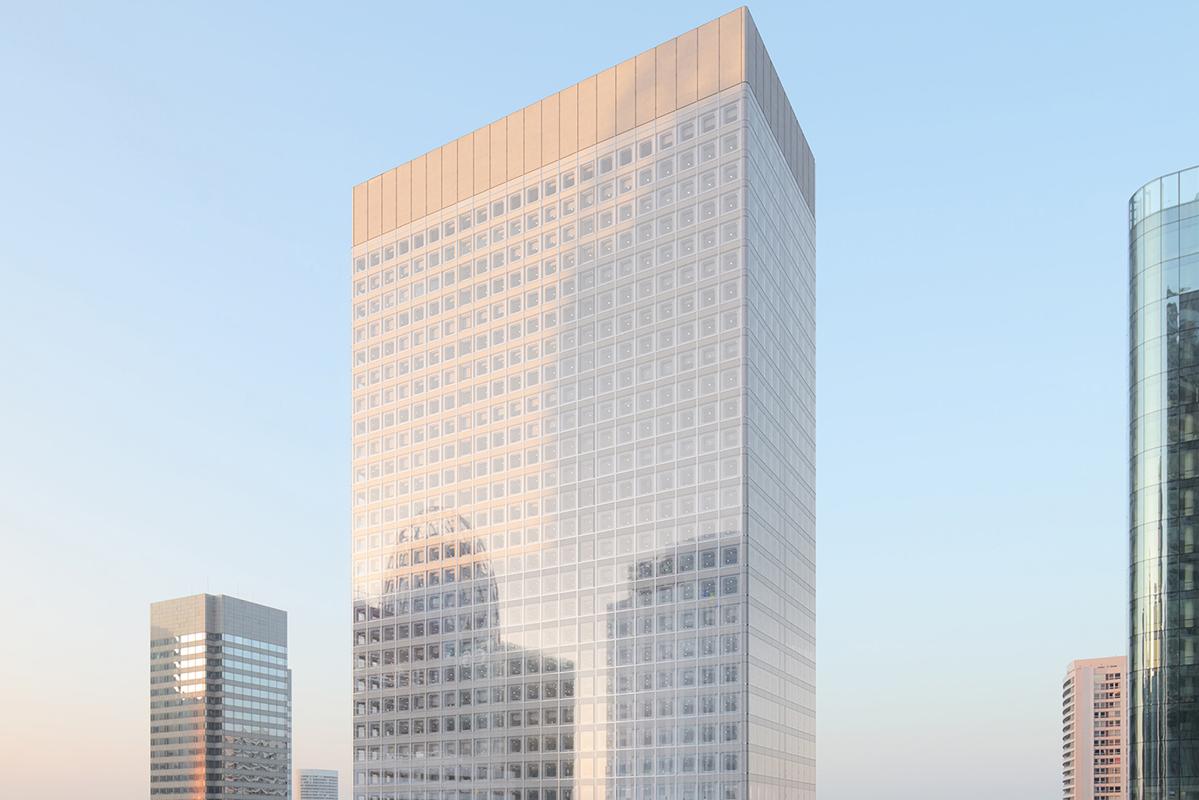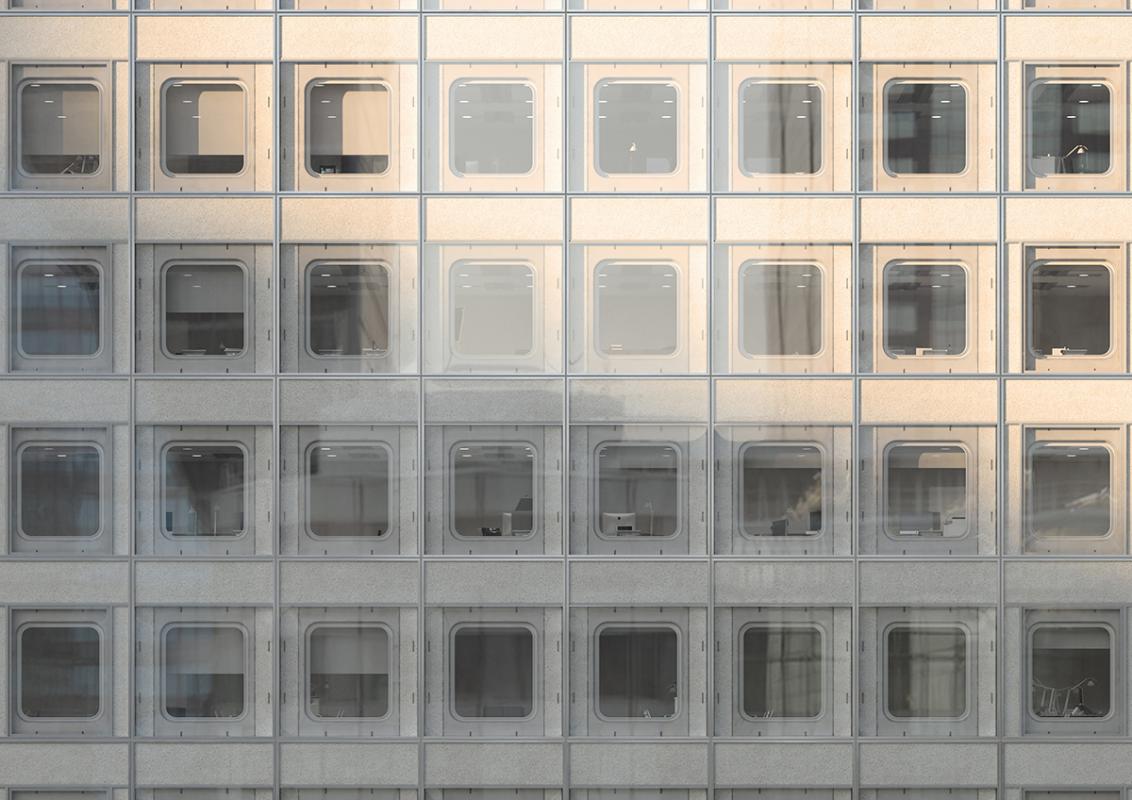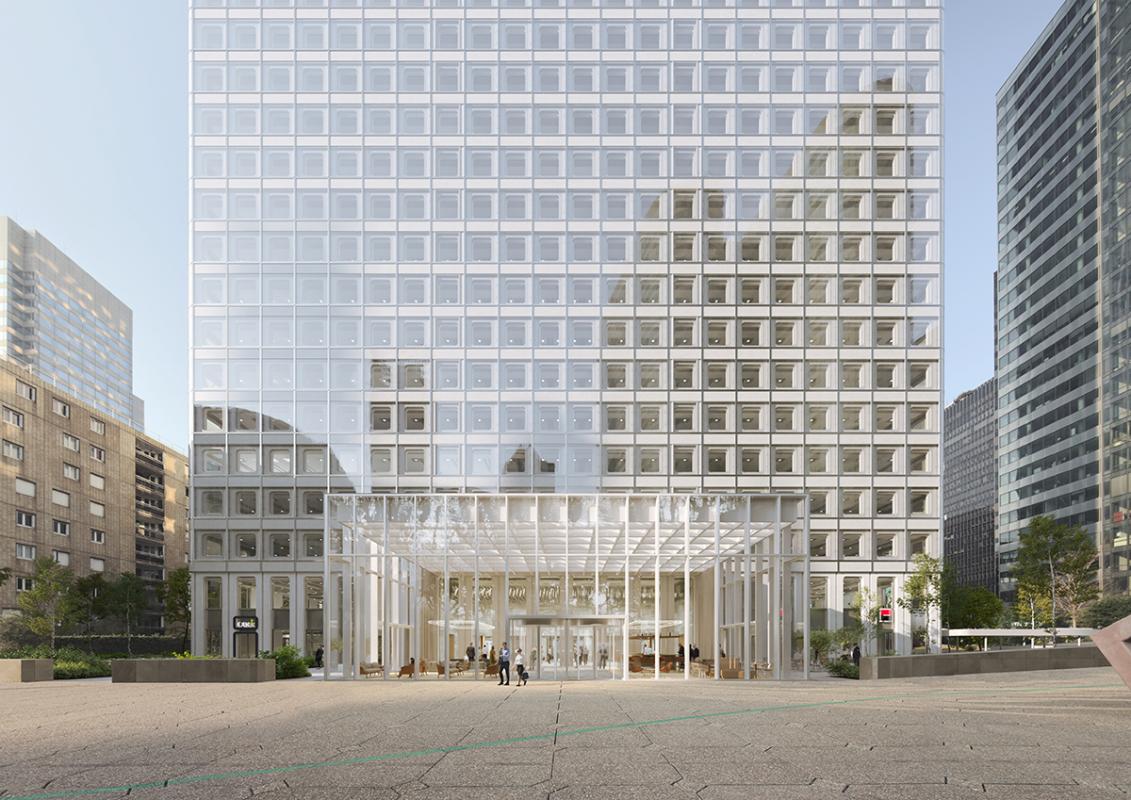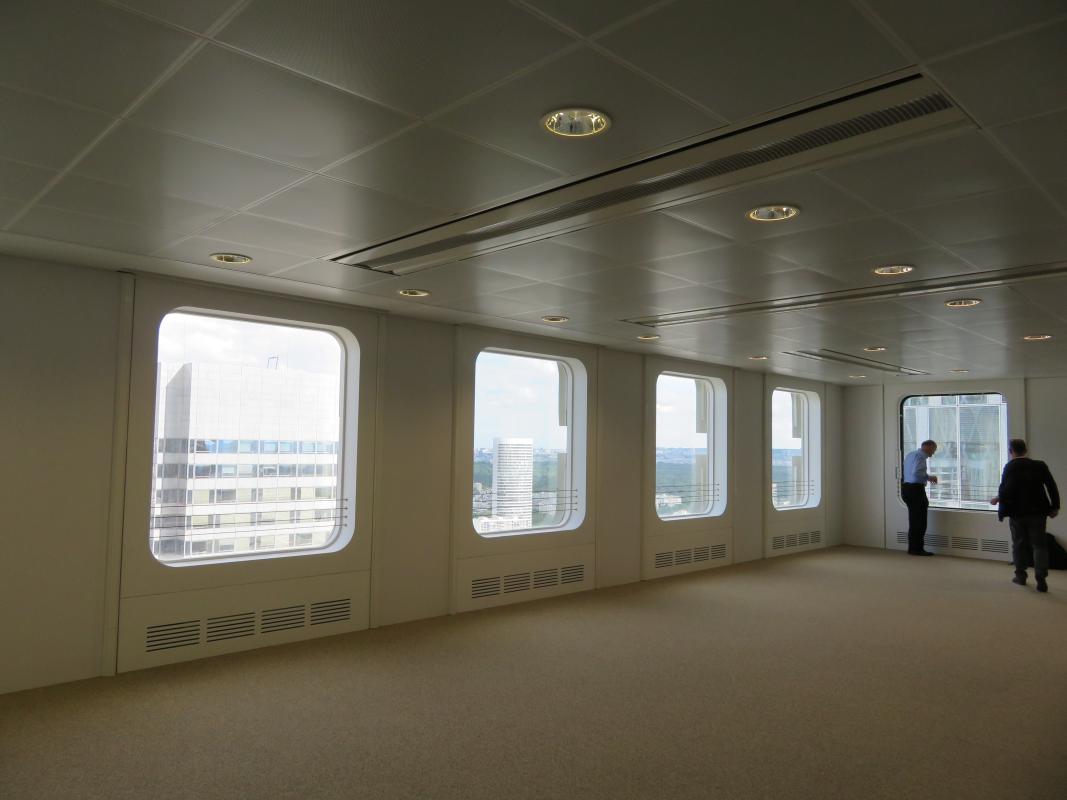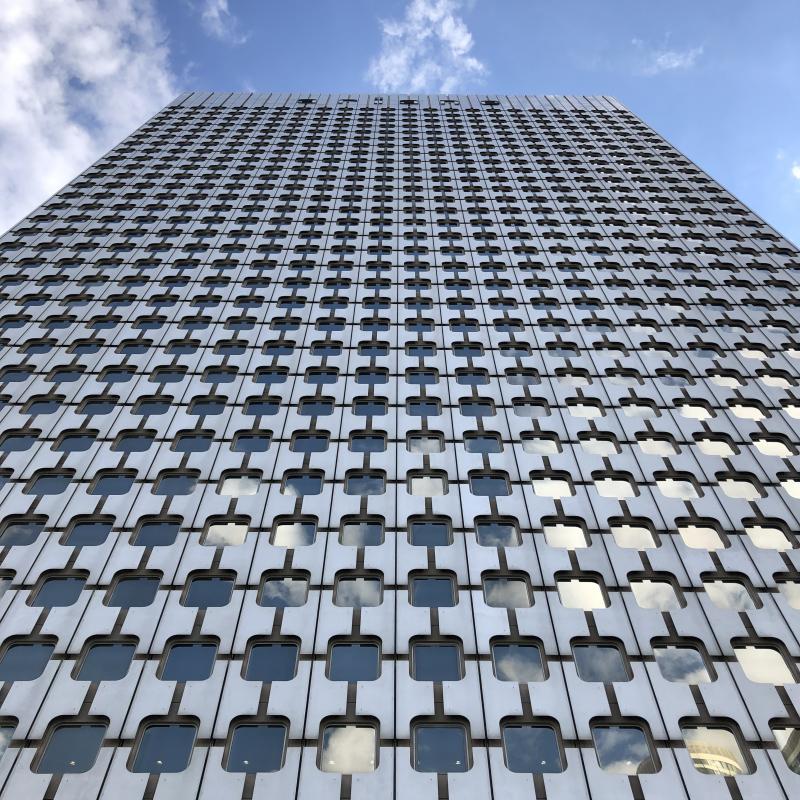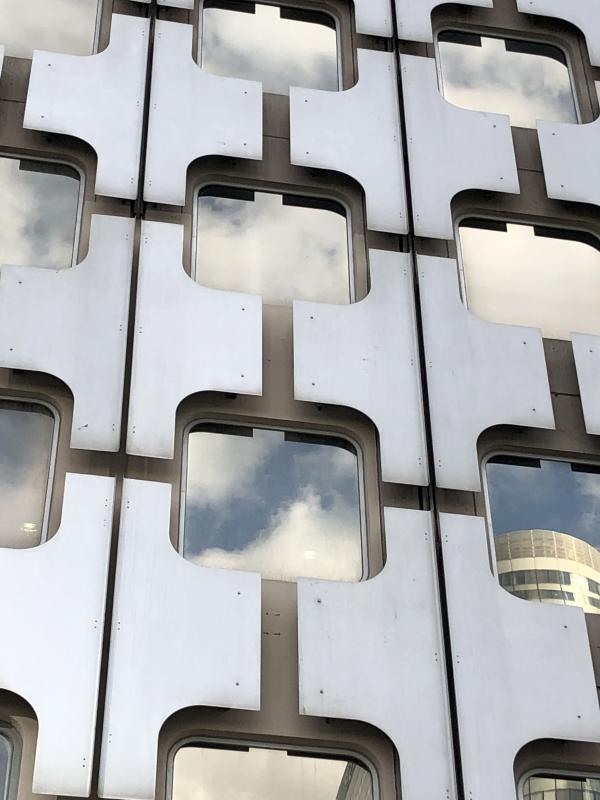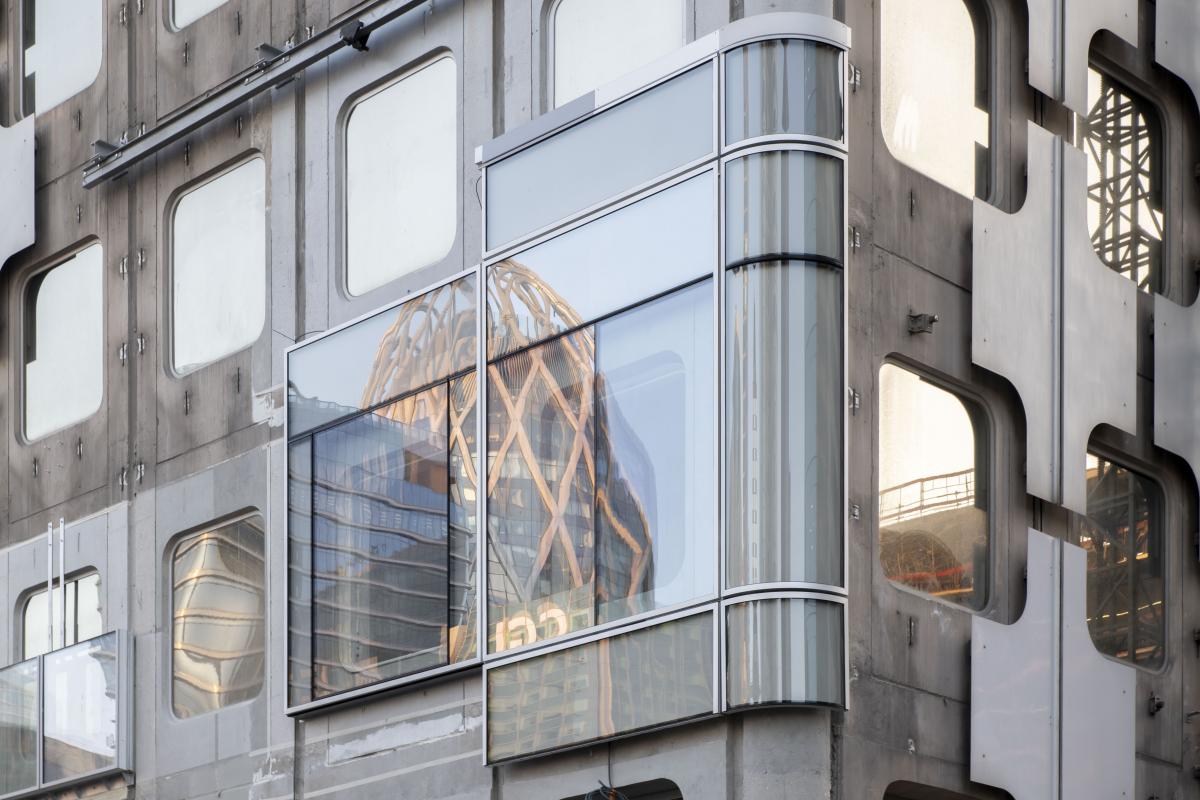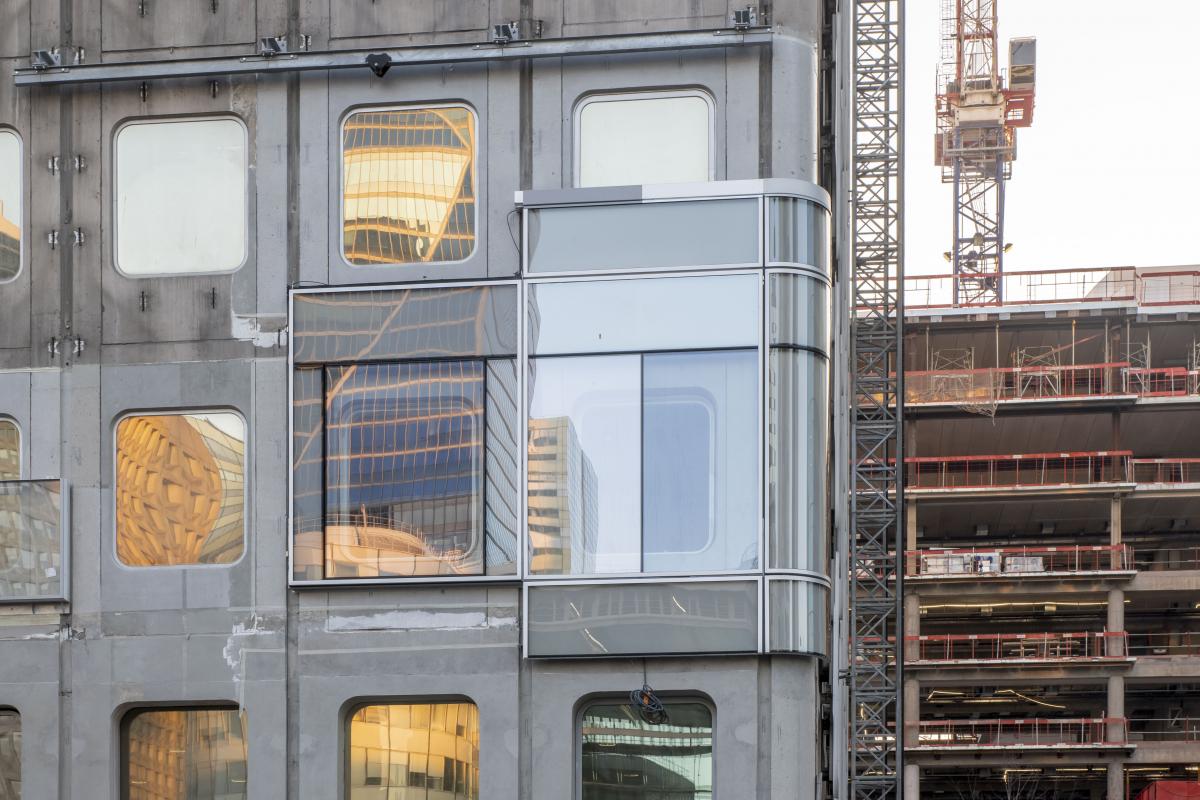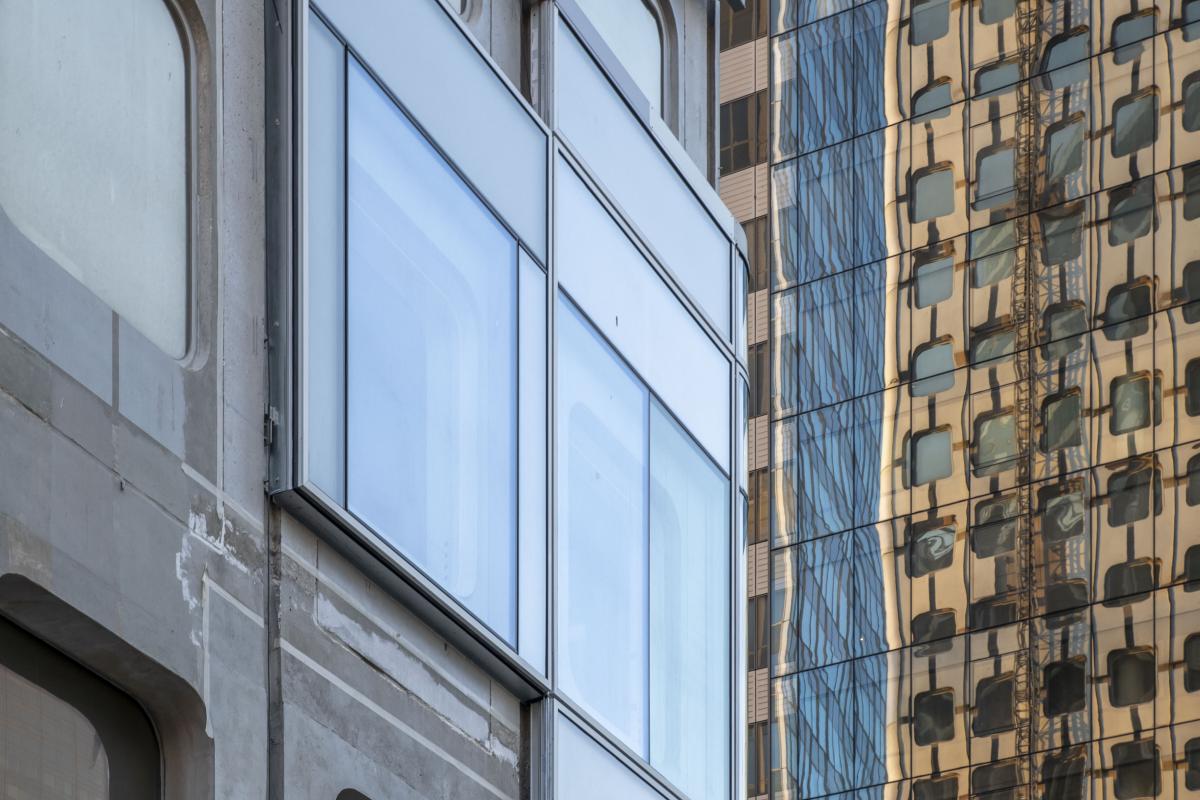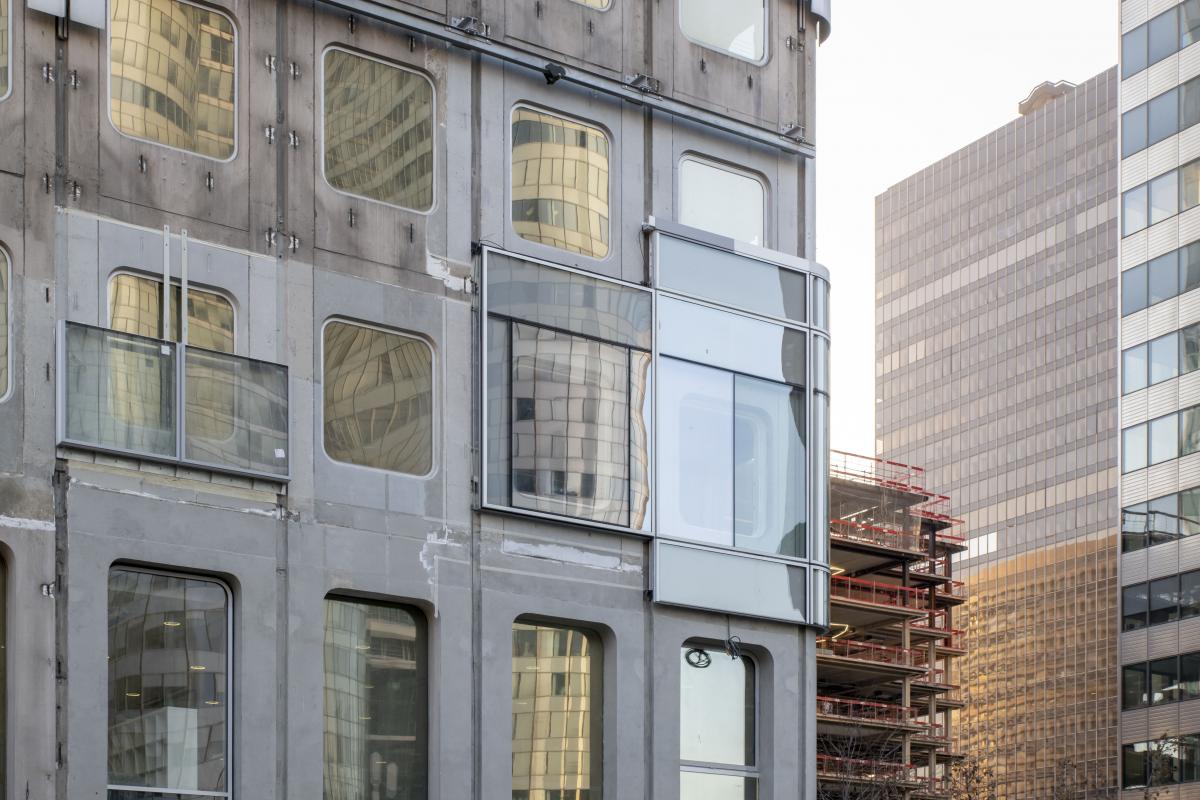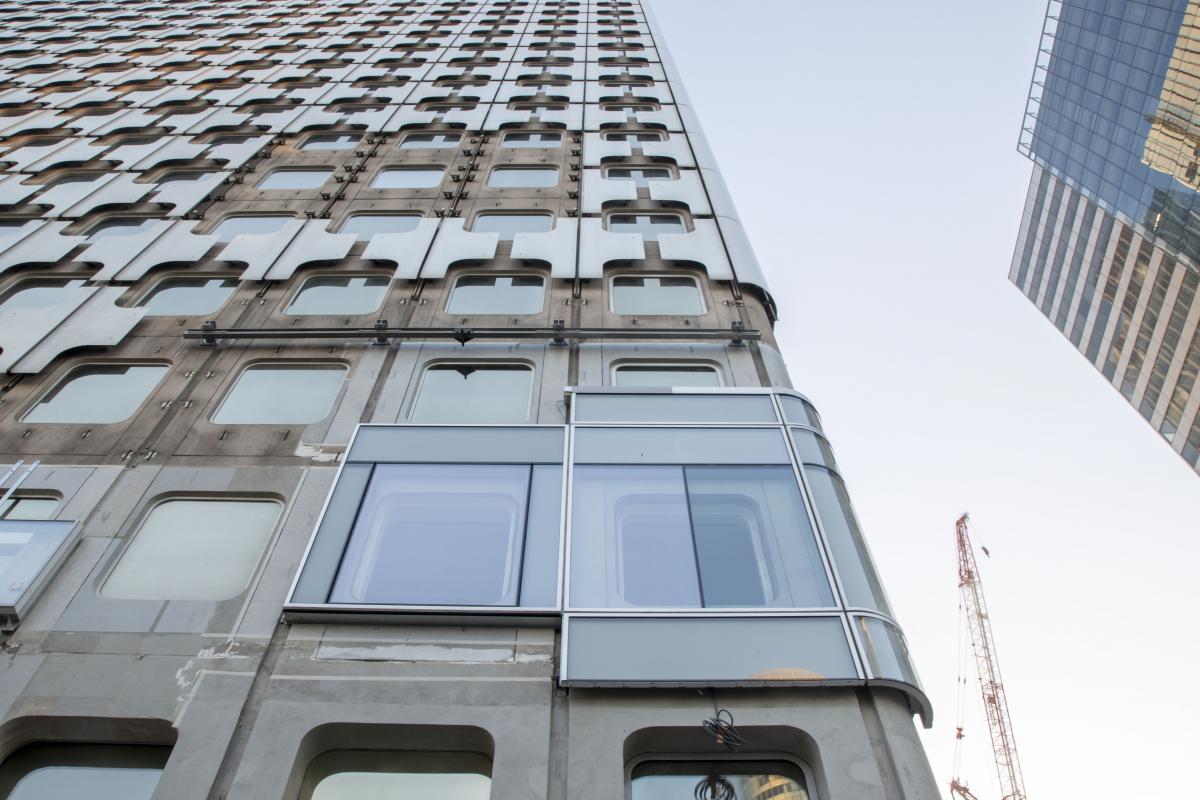Tour Ariane
Refurbishment of the Tour Ariane facades on an occupied building
T/E/S/S is accompanying the architects Nouvelle AOM in the renovation of the Tour Ariane. The aim of the project is to renew the image of the tower, with energy-efficient facades and a light renovation of the interior spaces.
The Tour Ariane was the second project by architect Jean de Mailly in La Défense, following the Tour Initial (formerly known as the Tour Nobel), which was the very first tower of the La Défense business district. Ariane was built between 1971 and 1975. It sits on a 29m by 63m rectangular base and is 153m high. The tower is built with a reinforced concrete post-and-beam system around a central core. The particularity of the existing facade is in the use of precast concrete infill panels. These precast panels were used as formwork for structural elements cast on site. The facades were then overclad on the outside with decorative aluminium ‘shields’, fixed directly to the concrete. Glazed window frames were inserted into the porthole-shaped openings in the precast panels in order to ensure the weather seal on the facade.
The aims of the project are to significantly reduce the building’s energy consumption by improving the efficiency of the facade, to redesign the entrance pavilion and the reception area and to modernise the tower’s overall image, while respecting the original architecture. To achieve this, the aluminium shield facings and frames were removed and the new glazed facade was positioned in front of the porthole openings with their distinctive form. The minerality of the concrete panels is thereby highlighted while significantly improving thermal insulation by applying external double glazing.
In addition to the constraints inherent in a refurbishment project on this scale, specific difficulties were also encountered on the project. The presence of asbestos, as is common in any project of this period, required appropriate removal methods. The footprint of the tower was restricted, so the new insulating facade could not extend beyond the line of the existing metal shields; this limited the width available for the overall facade system to 180mm between the concrete surface and the external glazed surface. The works must be conducted on an occupied site, so noise disturbance must be closely monitored to enable occupants to carry on their business, while also taking into account the residential buildings in the immediate vicinity. Finally, given that it’s a refurbishment, the additional loads of the new facade must not put excessive stress on the structural columns around the tower. The layout of the new facade follows the rigour of the structural grid (2.79m wide with a floor-to-floor height of 3.50m). French regulations require a fire-resistant spandrel panel, which on this project was required to be 1.2m high; the glazing is therefore subdivided in its height with a fairly generous 2.6 x 2.76 vision panel that frames the porthole and a 900mm-high shadow-box panel on the slab edge. Curved glass is used at the corners to preserve the existing silhouette of the tower.
The top and base are highlighted by discrete architectural lighting integrated into the facade.

